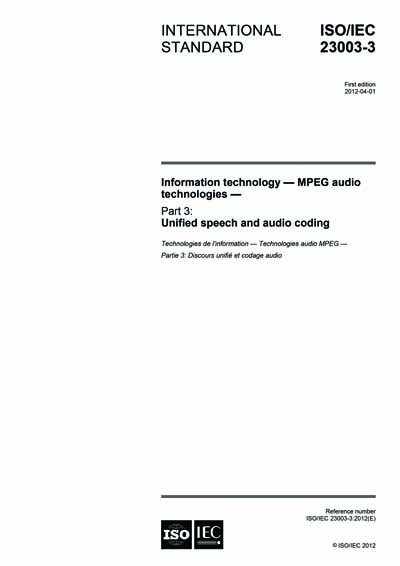Historical
ISO/IEC 23003-3:2012
Information technology - MPEG audio technologies - Part 3: Unified speech and audio coding
ISO/IEC 23003-3:2012 specifies a unified speech and audio codec which is capable of coding signals having an arbitrary mix of speech and audio content. The codec has a performance comparable to or better than the best known coding technology that might be tailored specifically to coding of either speech or general audio content. The codec supports single and multi-channel coding at high bitrates and provides perceptually transparent quality. At the same time, it enables very efficient coding at very low bitrates while retaining the full audio bandwidth.
ISO/IEC 23003-3:2012 incorporates several perceptually-based compression techniques developed in previous MPEG standards: perceptually shaped quantization noise, parametric coding of the upper spectrum region and parametric coding of the stereo sound stage. However, it combines these well-known perceptual techniques with a source coding technique: a model of sound production, specifically that of human speech.
Content Provider
International Organization for Standardization [iso]






